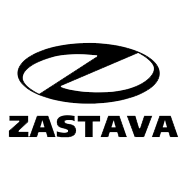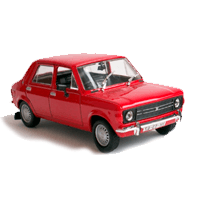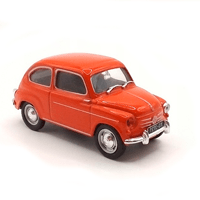
Catalog / Zastava
Zastava: The Rise and Fall of Yugoslavia's Automotive Pride
Zastava, a name that resonates deeply with the automotive history of Yugoslavia and Eastern Europe, began its journey in 1953 in Kragujevac, Serbia. The company's roots, however, stretch back to 1853 when it was founded as an arms manufacturer. This rich heritage of precision engineering would later prove invaluable in its transition to automobile production.
The turning point for Zastava came in 1954 when it signed a crucial licensing agreement with Fiat. This partnership allowed Zastava to produce Fiat models under its own brand, marking the beginning of mass car production in Yugoslavia. The first model to roll off the production line was the Zastava 750, affectionately known as the 'Fića', based on the Fiat 600. This small, affordable car quickly became a symbol of Yugoslavia's growing middle class and increasing modernization.
Throughout the 1960s and 1970s, Zastava expanded its range, introducing models like the Zastava 101 (based on Fiat 128) and the Yugo, which would later become its most internationally recognized model. The Yugo, launched in 1980, was designed to be an affordable, practical car for the masses. Despite mixed reviews in Western markets, it achieved the distinction of being the cheapest new car sold in the United States in the late 1980s.
Interesting fact: Zastava's Yugo GV (Great Value) was exported to the United States from 1985 to 1992, selling over 141,000 units – a remarkable feat for a car from a communist country in the American market.
The 1990s brought significant challenges for Zastava. The breakup of Yugoslavia and subsequent international sanctions severely impacted production and sales. Despite these setbacks, the company persevered, continuing to produce cars under increasingly difficult circumstances.
In an attempt to modernize its lineup, Zastava introduced the Zastava 10 in 2006, based on the second-generation Fiat Punto. However, this would be one of the last new models from the brand. In 2008, Fiat acquired a majority stake in Zastava, marking the end of the brand as an independent entity.
The last Zastava car rolled off the production line in November 2008, closing a chapter in automotive history. Today, while Zastava cars are no longer in production, they remain an important part of Eastern European automotive heritage, fondly remembered for their affordability, practicality, and the role they played in motorizing Yugoslavia and neighboring countries.
Zastava's legacy lives on in the numerous classic car clubs dedicated to preserving and celebrating these vehicles, particularly in the countries of the former Yugoslavia. The brand's history serves as a fascinating case study of how geopolitical events can shape the fate of an automotive company, and how a car can become a symbol of national pride and nostalgia.


